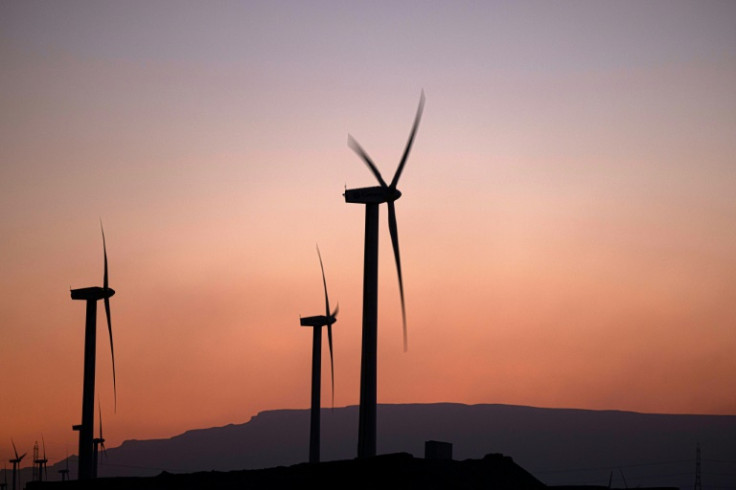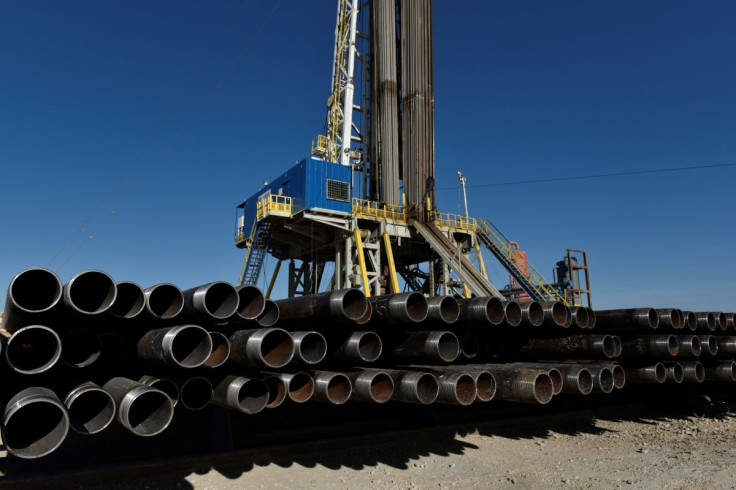Booming Renewables, Lingering Fossil Fuels: 2024 Outlook For Energy Markets And Politics

Global energy markets were dynamic in 2023, as energy producers around the world continued to grapple with the dilemma of bolstering energy security while transitioning away from fossil fuel-based systems.
With the new year approaching, let's take a look at the landscape of energy and climate for 2024.
Renewable Energy On The Rebound

2023 was a mixed bag for conventional renewable energy resources. In the U.S., multiple high-profile offshore wind projects were canceled in the face of high interest rates, supply chain constraints and local backlash, including Ørsted's 2.2 GW Ocean Wind project off the northern coast of New Jersey and Shell's 1.2 GW South Coast Wind project off of Massachusetts' southern shore.
The U.S. wind energy industry may resume its growth trajectory in 2024, however, as interest rate cuts remain likely and the Biden Administration looks to finalize new auctions before potentially leaving office in January 2025.
Meanwhile, global solar energy capacity will continue to climb as new projects come online: China, the U.S. and the European Union each set records in 2023 for solar energy installations in a single year, according to the International Energy Agency (IEA).
The supply of electric vehicles (EVs), as well as the minerals used to make EV batteries, will rise in 2024 as the supply chains for both established automakers and relative start-ups expand and mature. This will drive down consumer costs and narrow the price gap between EVs and combustion-engine vehicles.
The advent of new green and renewable energy technologies also stands to change the energy landscape for 2024 and beyond.
Green hydrogen has been a focal point of international decarbonization strategies, and will likely be the source of increased investment in a stable macroeconomic climate. The Biden Administration plans to release new guidance around the green hydrogen tax credit in early 2024, facilitating projects like Duke Energy's planned end-to-end solar power and green hydrogen facility in Central Florida; European Union members have also recently engaged in talks with North African countries to retrofit existing natural gas pipelines for the transmission of green hydrogen fuel.
And while it certainly won't materialize in a meaningful way in 2024, nuclear fusion shows immense promise for the long-term; a series of technological breakthroughs at the Lawrence Livermore National Laboratory in California produced repeated net-energy gain experiments, adding weight behind ongoing efforts to develop commercial-scale nuclear fusion power.
A Busy Global Election Year
2024 will be a banner year for democracies across the world. Nearly 2 billion voters will be eligible between general parliamentary or presidential elections scheduled in India, Indonesia and Pakistan in the first half of the year.
Taiwan's general election is scheduled to take place on Jan. 13; Chinese military activity in Taiwanese airspace and territorial waters has already spiked ahead of the election.
Arguably the most consequential and least predictable election will take place in the U.S., however, with a likely rematch between President Joe Biden and former President Donald Trump certain to further intensify political polarization.

In the short term, the election will provide a boost to domestic oil and gas production in the U.S.—which already has an output of 13.5 million oil barrels per day, the highest-ever recorded figure. While gas prices may not precisely determine a president's popularity, the Biden administration certainly has every incentive to greenlight new oil wells and cut down on the prices average Americans pay at the gas pump.
Global oil production may not rise as quickly in 2024 as it did in 2023, however, as OPEC production cuts, conflict in the Middle East and newfound instability in Guyana are likely to suppress global fossil fuel output.
While both Biden and Trump have supported boosting domestic oil and gas output while in office, the two differ starkly on renewable and green energy policy. Initiatives like the Biden Administration's planned 30GW of offshore wind facilities and target of net-zero power generation by 2035 would certainly be called into question, were Trump to win November's election.
And the U.S. isn't the only major North American democracy with an election scheduled for 2024: Mexico will vote in June to appoint a successor to incumbent President Andrés Manuel López Obrador, who continues to enjoy high favorability from the Mexican electorate but is ineligible for reelection.

Claudia Sheinbaum, the candidate of López Obrador's MORENA party who was Mayor of Mexico City until she began her candidacy in June, leads all recent polls by double-digit margins (with 50%+ of voter intention across multi-candidate surveys). A longtime environmental public servant with a Ph.D. in energy engineering, Sheinbaum has expressed support for drastically expanding Mexico's green and renewable energy capacity while maintaining a strong role for state-run oil company Pemex and electric utility CFE.
Mexico's national energy strategy stands to be revamped under the new administration; the Mexican oil industry, a crucial source of government revenue in prior years, has lost competitiveness in recent years as offshore exploration has slowed and oil and gas imports from the U.S. have steadily grown. Meanwhile, renewable power projects have received limited backing from federal regulators—Mexico's total wind and solar energy capacity declined by 5% between 2019 and 2022.
Overall, political dynamics will serve to prop up fossil fuel production across major producing countries (which reached record levels in 2023). But still, the IEA predicts peak fossil fuel consumption will happen before 2030; and renewable energy may still continue its growth trajectory through 2025 as long as certain macroeconomic and political conditions hold.
Energy markets in 2024 will ultimately remain as volatile as the politics that shape them.
© Copyright IBTimes 2025. All rights reserved.





















